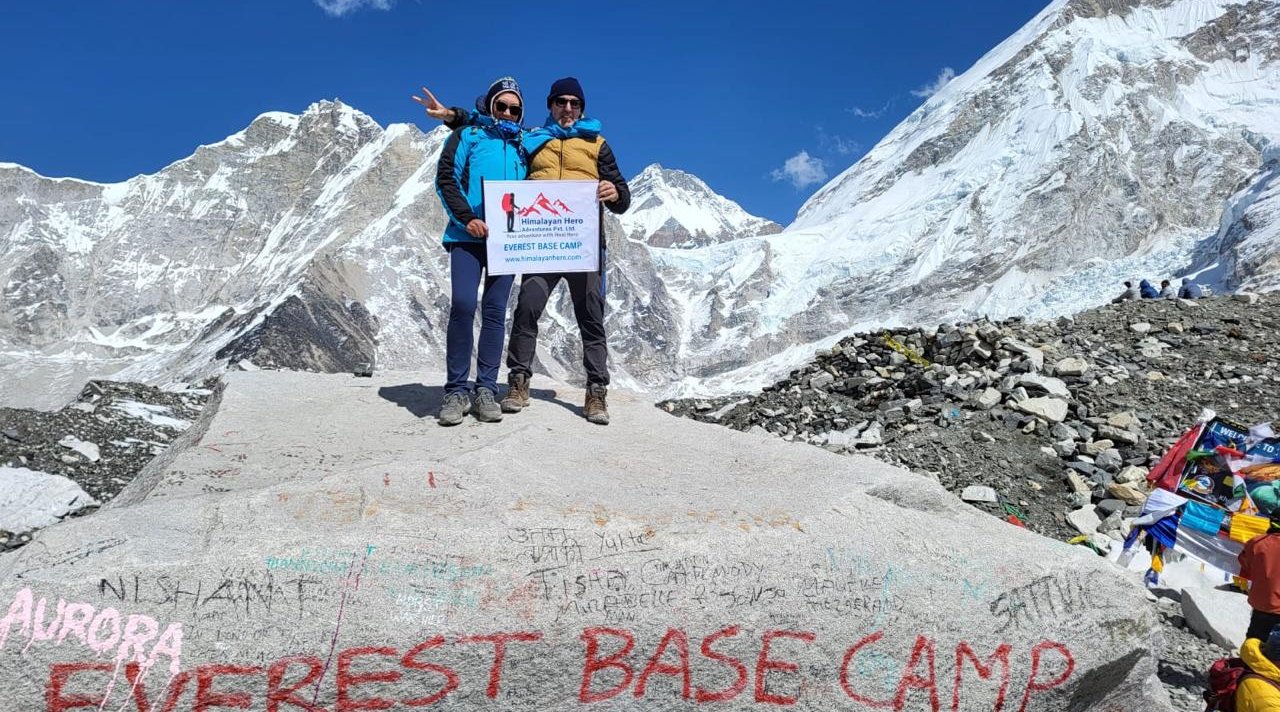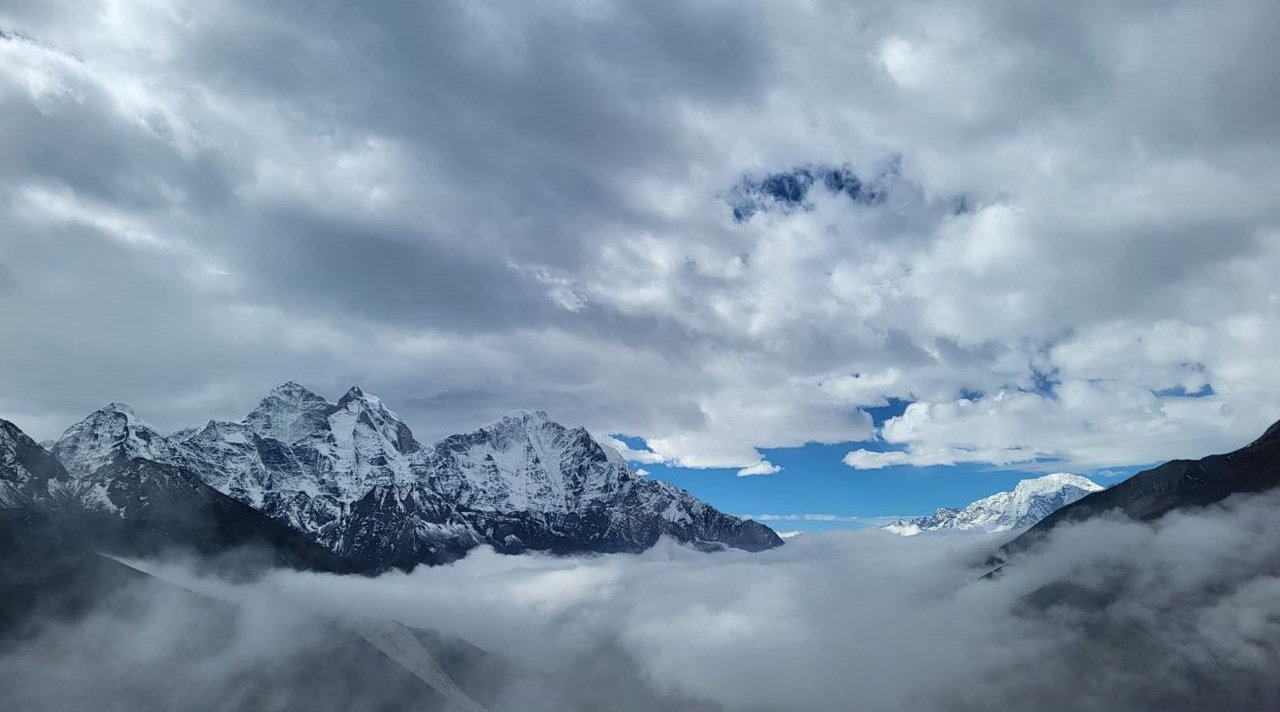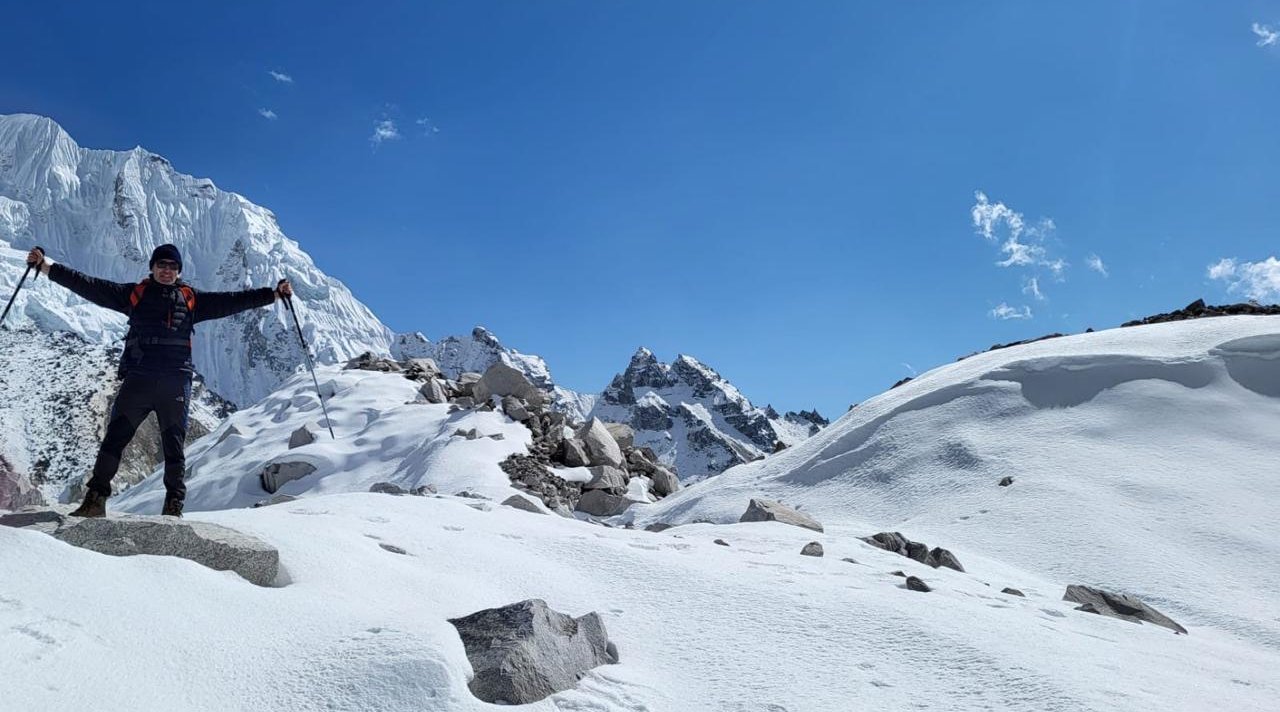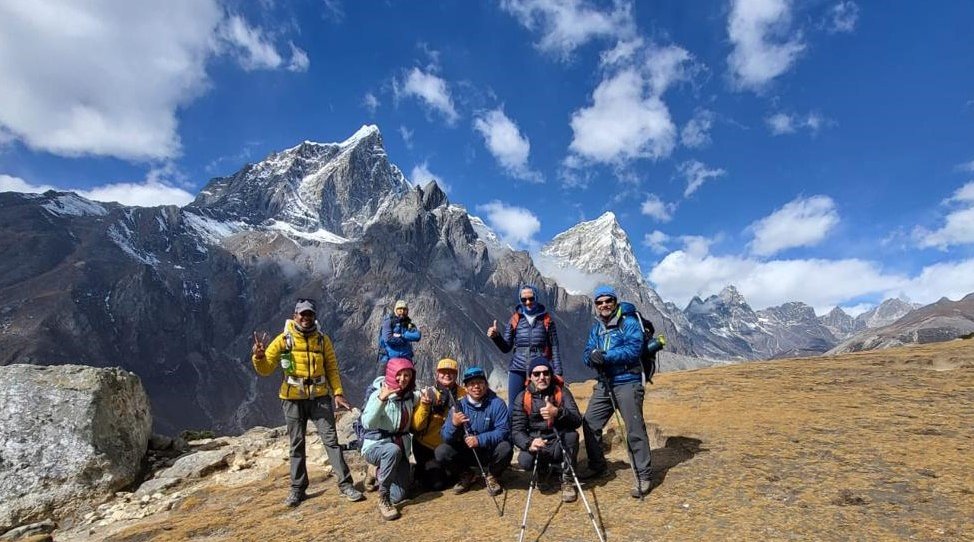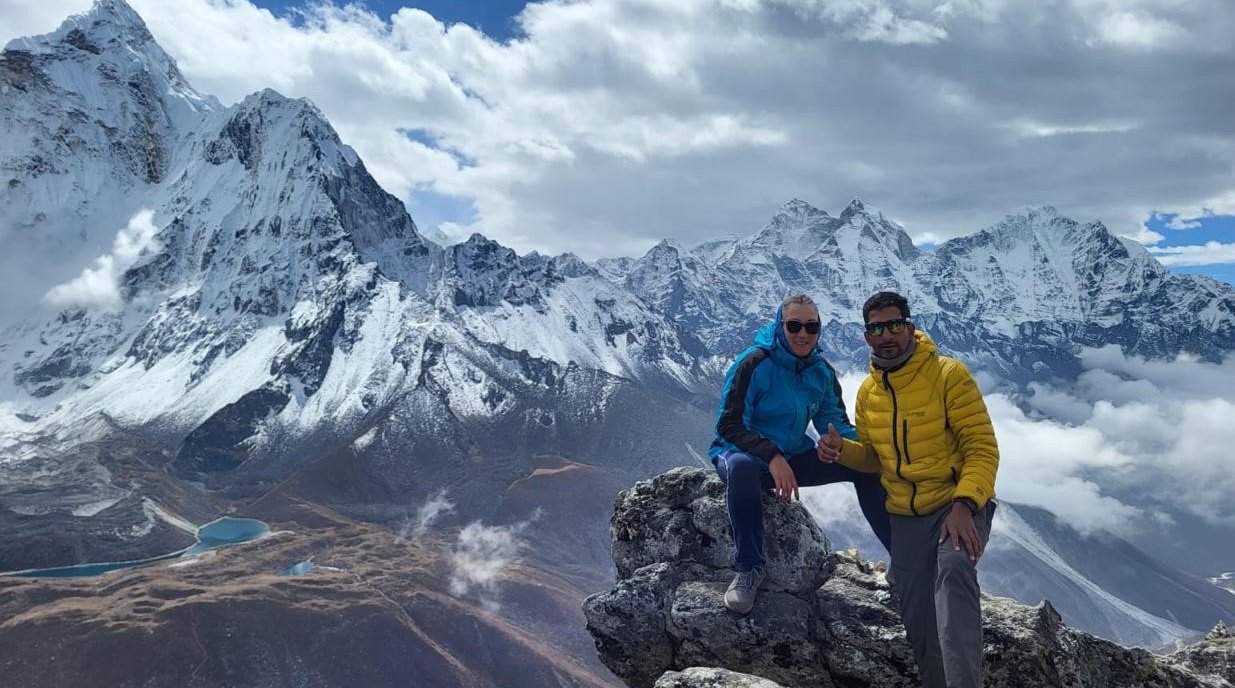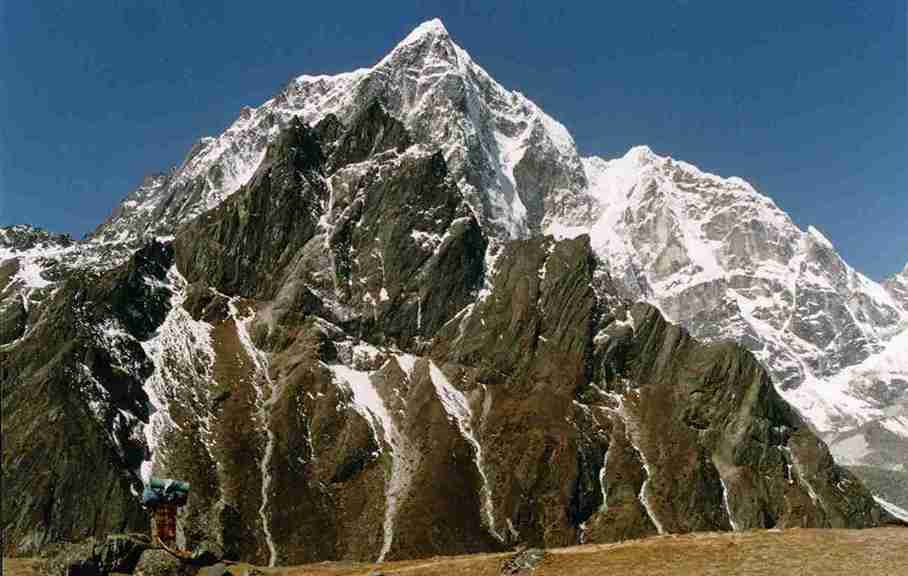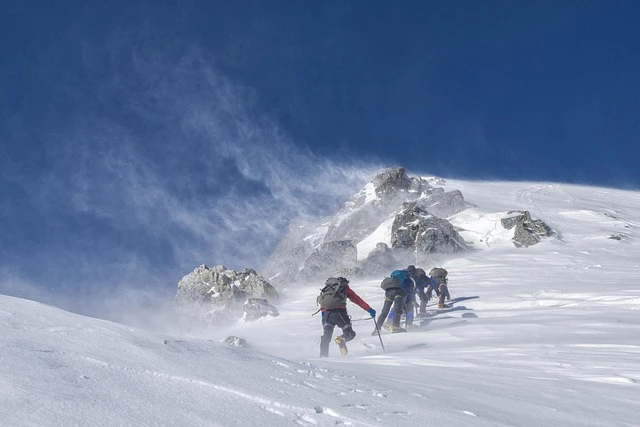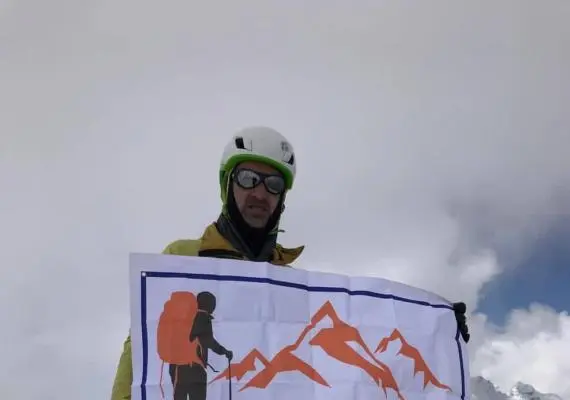The Everest Base Camp Trek is the ultimate Himalayan adventure, taking you to the foot of the world's highest mountain. Every year, over 40,000 trekkers from around the globe embark on this iconic journey through Nepal's Khumbu Valley, drawn by the promise of standing beneath the mighty peak of Mount Everest.
Our 14-day Everest Base Camp trek package is designed for optimal acclimatization and maximum enjoyment. This classic EBC trek route follows the footsteps of legendary mountaineers Sir Edmund Hillary and Tenzing Norgay, winding through ancient Sherpa villages, sacred monasteries, and some of the most breathtaking mountain scenery on Earth.
At Himalayan Hero Adventures, we've guided over 500 trekkers to Everest Base Camp with a 92%+ success rate. Our all-inclusive package covers everything from domestic flights to experienced Sherpa guides, ensuring you can focus entirely on the adventure ahead.
Whether you're a first-time trekker seeking the challenge of a lifetime or an experienced hiker ready to tick off the ultimate bucket-list destination, this Everest Base Camp trek Nepal adventure delivers an unforgettable experience that will stay with you forever.
What Our Trekkers Say:
"The Himalayan Hero team made my EBC dream come true. Professional guides, perfect pacing, and memories for a lifetime!" — Sarah M., Australia
"Best decision I ever made. The acclimatization schedule was perfect - I felt strong all the way to Base Camp." — James T., UK
Everest Base Camp Trek Highlights
The EBC trek offers incredible experiences that make it one of the world's most sought-after adventures:
- Stand at Everest Base Camp (5,364m) – Reach the legendary basecamp where mountaineers begin their summit attempts
- Sunrise from Kala Patthar (5,555m) – Witness the golden rays illuminating Mount Everest's peak - the best time for Everest Base Camp Trek photography
- Fly into Lukla Airport – Experience one of the world's most thrilling 35-minute mountain flights
- Explore Namche Bazaar – Discover the vibrant Sherpa capital with great coffee shops and local markets
- Visit Tengboche Monastery – The oldest and most sacred monastery in the Khumbu region with breathtaking sunset views
- Trek through Sagarmatha National Park – A UNESCO World Heritage Site with diverse Himalayan flora and fauna
- Immerse in Sherpa Culture – Visit the Sherpa Cultural Museum and stay in traditional villages
- View the Khumbu Glacier – Trek along the rugged terrain of one of the world's most impressive glaciers
- Panoramic Mountain Views – See Lhotse (8,516m), Nuptse (7,861m), Ama Dablam (6,812m), Pumori (7,161m), Taboche, Cholatse, and dozens more peaks
- Cross Iconic Suspension Bridges – Including multiple bridges over the Dudh Koshi River
- Climate Acclimation Hikes – Explore stunning viewpoints like Syangboche and Nangkartshang Peak (5,083m)
Why 500+ Trekkers Choose Himalayan Hero Adventures
When you trek to Everest Base Camp with us, you're choosing a team dedicated to your safety, comfort, and success.
Proven Track Record
- 500+ successful EBC treks completed since 2015
- 92%+ trek completion success rate
- Locally owned and operated by Nepali mountaineering experts
- Zero serious incidents in our company history
Expert Team
- Government-licensed English-speaking guides with 10+ years experience
- Certified wilderness first responders on every trek
- Experienced Sherpa porters from the Khumbu region (1 porter per 2 trekkers)
All-Inclusive Packages
- No hidden costs or surprise fees
- Everything included from airport pickup to farewell dinner
- Transparent pricing with group discounts available
- Helicopter flight options available for scenic route upgrades
Safety First Approach
- Comprehensive climate acclimation schedule (2 full rest days)
- Emergency evacuation protocols with satellite communication
- First aid trained staff carrying medical supplies
- Daily health monitoring at altitude
Responsible Tourism
- Fair wages for all staff (above industry standard)
- Eco-friendly practices and plastic-free trekking initiative
- Direct support for local Sherpa communities
- Carbon offset program for all flights
Flexible Booking
- Free date changes up to 30 days before departure
- 24/7 customer support via WhatsApp
- Small group sizes (max 12) for personalized experience
- Solo traveler friendly with regular group departures
Ready to Start Your Everest Adventure?
Spring 2026 dates are filling fast! Join over 500 trekkers who've achieved their Everest Base Camp dream with Himalayan Hero.
Check Available Dates → | Book Now - $1,449
Questions? WhatsApp us: +9779801127073
Everest Base Camp Trek Route
- Start your adventure at Lukla airport, the gateway to the Everest region
- Trek through Namche Bazaar, the bustling Sherpa capital and trading hub
- Enter Sagarmatha National Park with stunning mountain vistas
- Visit the sacred Tengboche Monastery, home to Buddhist monks with Everest views
- Acclimatize in Dingboche village, surrounded by stone-walled fields
- Ascend to Kala Patthar (5,545m) for the best sunrise views of Mount Everest
- Reach Everest Base Camp (5,364m) and celebrate your incredible achievement
- Return via the same route through traditional Sherpa villages and rhododendron forests
Everest Base Camp Trek Cost
Our Everest Base Camp trek cost is designed to be all-inclusive, with no hidden fees or surprise expenses.
Package Price: $1,449 USD per person
Group Discounts:
- 2-3 trekkers: $1,449 per person
- 4-6 trekkers: $1,399 per person (Save $50)
- 7-10 trekkers: $1,349 per person (Save $100)
- 11+ trekkers: Contact us for custom pricing
- Solo traveler supplement: +$200
What's Included in Your Package
Accommodation:
- 2 nights in 3-star hotel in Kathmandu (twin-share, with breakfast)
- 11 nights in best available tea houses along the trek (twin-share)
Meals:
- 11 breakfasts during the trek
- 11 lunches during the trek
- 11 dinners during the trek
- Farewell dinner at fine restaurant in Kathmandu
- Tea/coffee with all meals
Transportation:
- Private airport pickup and drop-off
- Round-trip flight Kathmandu-Lukla-Kathmandu
- All ground transfers
Guide & Porter:
- Experienced government-licensed English-speaking guide (10+ years experience)
- Porter service (1 porter per 2 trekkers, carrying up to 20kg each)
- All staff wages, accommodation, meals, and insurance
Permits & Fees:
Equipment Provided:
- 4-season sleeping bag rental (comfort rated to -20°C)
- Down jacket rental
- Duffel bag for porter to carry
Safety & Support:
- Comprehensive first aid kit with oxygen cylinder
- Satellite communication device
- Daily health monitoring at altitude
- Emergency evacuation coordination
Extras:
- Trekking map of Everest region
- Himalayan Hero certificate of completion
- Pre-trip briefing and gear check
What's Not Included
- International airfare to/from Kathmandu
- Nepal tourist visa ($50 for 30 days, obtained on arrival)
- Travel insurance (mandatory – must cover altitude trekking and emergency evacuation)
- Lunch and dinner in Kathmandu (Days 1, 13, 14)
- Personal expenses (snacks, bottled drinks, souvenirs)
- Hot showers at tea houses ($3-5 per shower)
- WiFi and device charging at tea houses ($2-5)
- Tips for guide and porters (suggested: $150-200 total)
- Personal trekking gear and clothing
- Helicopter upgrade options
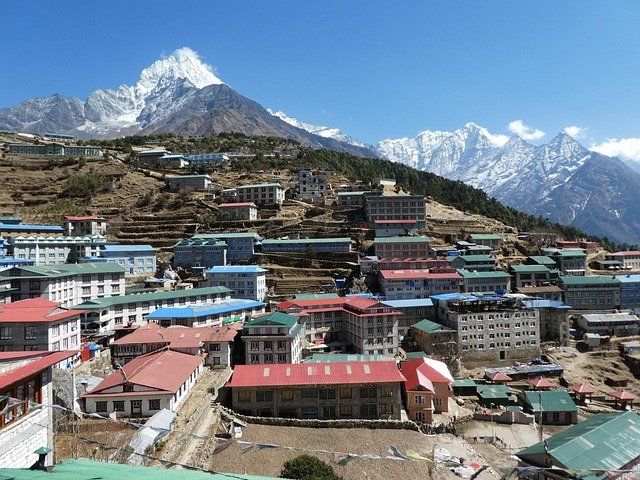
Best Time for Everest Base Camp Trek
Timing your trek to Everest Base Camp correctly is crucial for safety and enjoyment. Nepal has distinct seasons that dramatically affect trekking conditions.
Peak Season: September to November (Autumn)
This is the most popular time for the Everest Base Camp trek:
- Crystal-clear skies and best mountain visibility
- Stable weather with minimal rainfall
- Comfortable daytime temperatures (10-15°C at lower elevations)
- Vibrant post-monsoon landscapes
- Busy trails and full tea houses (book 2-3 months ahead!)
Best for: First-time trekkers, photographers, those wanting reliable weather
Peak Season: March to May (Spring)
The second most popular season offers unique advantages:
- Rhododendron forests in full bloom (March-April)
- Warmer temperatures than autumn
- Everest climbing expeditions at Base Camp (exciting atmosphere)
- Witness expedition teams preparing for summit attempts
- Slightly more chance of afternoon clouds
Best for: Wildflower enthusiasts, those wanting to see climbing expeditions
Shoulder Season: December to February (Winter)
Winter trekking is challenging but rewarding:
- Fewer trekkers on the trail (peaceful experience)
- Clear skies between weather systems
- Very cold temperatures (-15 to -25°C at high elevations)
- Some tea houses may be closed above Namche
- Lower prices and discounts available
Best for: Experienced trekkers, budget travelers, those seeking solitude
Off-Season: June to August (Monsoon)
Generally not recommended:
- Heavy rainfall and leeches on lower trails
- Clouds obscure mountain views
- Risk of landslides and flight cancellations
Read our complete Best Time to Trek EBC Guide for month-by-month breakdowns.
Everest Base Camp Trek Difficulty
One of the most common questions we receive: "How difficult is the Everest Base Camp trek?"
The honest answer: It's challenging but achievable for anyone with reasonable fitness and proper preparation.
Difficulty Rating: Moderate to Challenging
The EBC trek difficulty comes from several factors:
Altitude Challenges:
- Maximum elevation: 5,555m (Kala Patthar)
- Sleep above 4,000m for 6 nights
- Altitude affects everyone differently regardless of fitness
- Our itinerary includes 2 climate acclimation days
Physical Demands:
- Average 5-7 hours of trekking per day
- Longest day: 8-9 hours (Day 9 to EBC)
- Total trekking distance: approximately 130 km
- Mix of gradual climbs, steep ascents, and rocky paths
Terrain:
- Well-maintained trails throughout
- No technical climbing or equipment required
- Some sections along rocky glacier moraine
- Suspension bridges (may challenge those with height concerns)
Weather:
- Temperatures can drop to -15°C at higher elevations
- Weather can change quickly in the mountains
- Proper layering system essential
Is the Everest Base Camp Trek for Beginners?
Yes! The Everest Base Camp trek for beginners is absolutely achievable. You don't need previous high-altitude experience, but you should:
- Be in good overall health
- Exercise regularly (cardio fitness most important)
- Be comfortable walking 5-7 hours per day
- Commit to 2-3 months of pre-trek preparation
- Be mentally prepared for basic tea house accommodation
Recommended Preparation
Physical Training (Start 2-3 months before):
- Cardio: Running, cycling, swimming (4-5 times per week)
- Hiking: Weekend hikes with elevation gain wearing your boots
- Stairs: Climb stairs with a loaded 8-10kg backpack
- Strength: Squats, lunges, core exercises
For complete training advice, see our EBC Trek Difficulty & Training Guide.
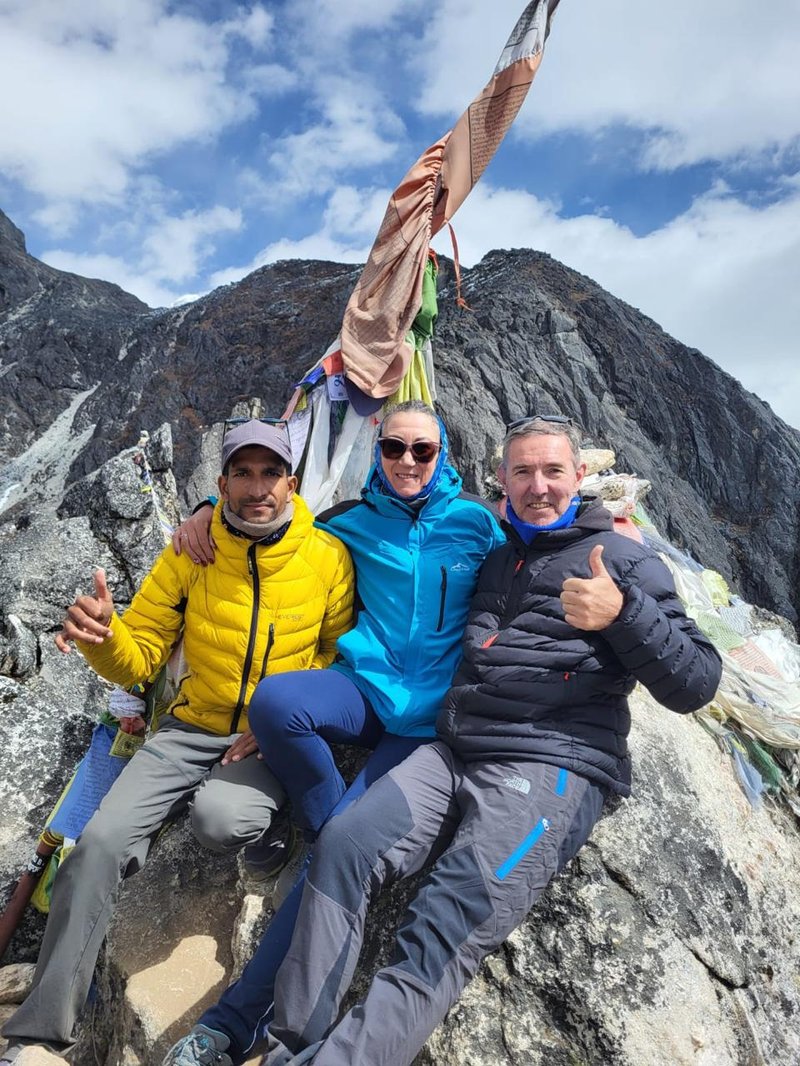
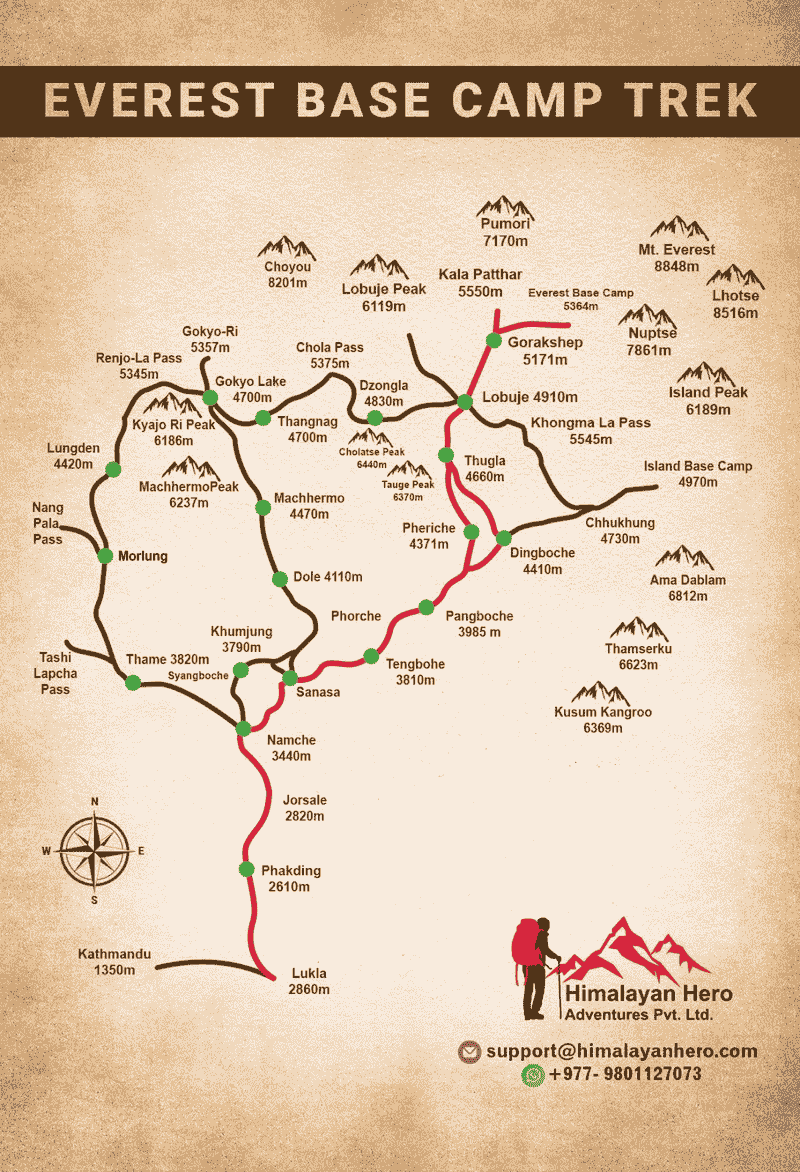
EBC road trek map Kathmandu to Base Camp
View our detailed Everest Base Camp Trek route map.
What to Expect on the Trail
Knowing what to expect helps you prepare mentally for your mount Everest Base Camp trek adventure.
Tea House Accommodation
Tea houses are family-run lodges along the trekking route:
- Rooms: Twin beds with mattress, pillow, and blankets
- Bathrooms: Shared (squat toilets common at higher elevations)
- Heating: Dining room heated by yak-dung stove; bedrooms unheated
- Electricity: Available for charging ($2-5 fee)
- Hot Showers: Available at most lodges ($3-5 fee)
- WiFi: Available but slow and unreliable above Namche ($3-5/day)
Food on the Trek
Tea houses serve surprisingly good food:
- Dal Bhat – Lentil soup, rice, vegetables (unlimited refills!)
- Fried rice and noodles – Trekker favorites
- Momos – Nepali dumplings
- Soups – Garlic soup popular for altitude
- Breakfast – Pancakes, porridge, eggs, toast
- Snacks – Snickers bars, cookies available
Tips:
- Stick to cooked food at higher elevations
- Garlic helps with acclimatization
- Drink 3-4 liters of fluids daily
- Avoid meat above Namche (freshness concerns)
Weather & Temperatures
- Lower Elevations (2,500-3,500m): Day 10-20°C, Night 0-10°C
- Mid Elevations (3,500-4,500m): Day 5-15°C, Night -5 to 5°C
- High Elevations (4,500m+): Day 0-10°C, Night -10 to -20°C
Packing Essentials your EBC trek
Proper gear makes a huge difference. Here's what you'll need:
Clothing (Layering System)
Base Layers:
- 2-3 moisture-wicking t-shirts
- 2-3 thermal tops and bottoms
Mid Layers:
- Fleece jacket
- Light down jacket (we provide one)
Outer Layers:
- Waterproof/windproof jacket
- Waterproof pants
Accessories:
- Warm beanie + sun hat
- Buff/neck gaiter
- Warm gloves + liner gloves
- UV-protection sunglasses
Footwear
- Sturdy hiking boots (broken in!)
- Camp shoes or sandals
- 4-5 pairs wool/synthetic hiking socks
Gear (We Provide Sleeping Bag & Down Jacket)
- 30-40L daypack
- Headlamp with extra batteries
- Trekking poles (highly recommended)
- 2x 1-liter water bottles
- Sunscreen SPF 50+ and lip balm
Read our complete EBC Trek Packing List.
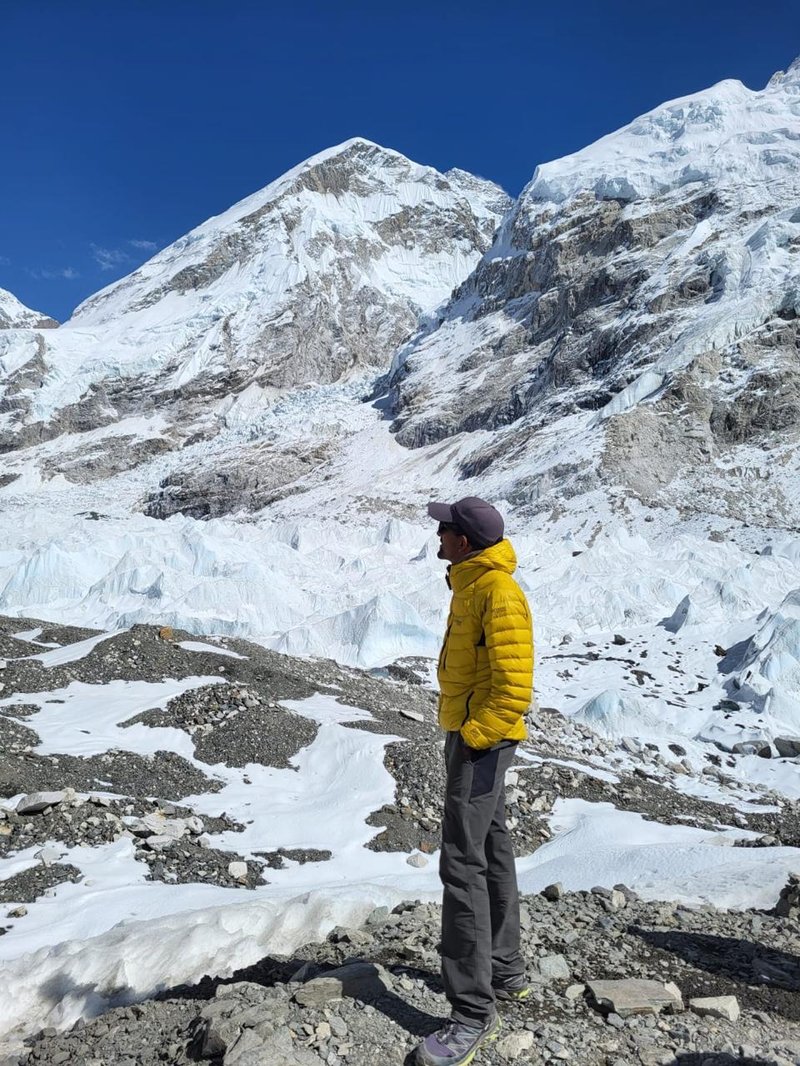
Also, check out our other customized Everest related packages at an affordable price:
Book Your Everest Base Camp Trek Today
You've read about the adventure. You've seen the itinerary. You know what to expect.
Now it's time to make it happen.
The Everest Base Camp Trek is more than a trek—it's a life-changing journey that will push your limits, reward you with incredible experiences, and leave you with memories that last a lifetime.
Why Book with Himalayan Hero Adventures
- ✅ All-Inclusive Package: $1,449 per person – no hidden costs
- ✅ 92%+ Success Rate: Proven acclimatization schedule
- ✅ 500+ Happy Trekkers: Since 2015
- ✅ Local Expertise: Nepali-owned, experienced Sherpa guides
- ✅ Small Groups: Maximum 12 trekkers
- ✅ Flexible Booking: Free date changes up to 30 days
2026 Departures Now Open
Spring Season: March, April, May
Autumn Season: September, October, November

